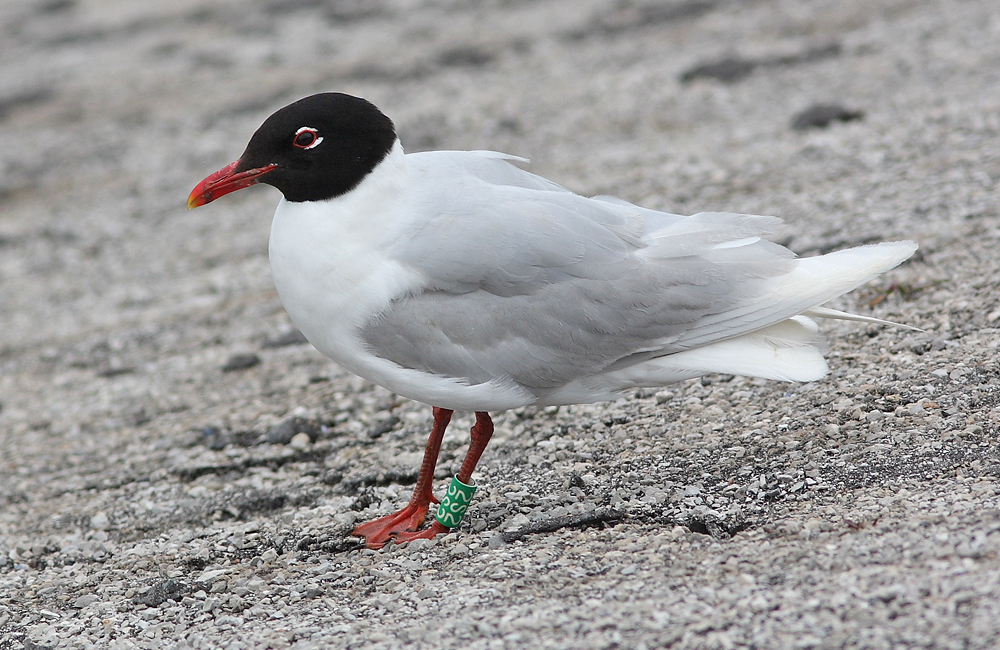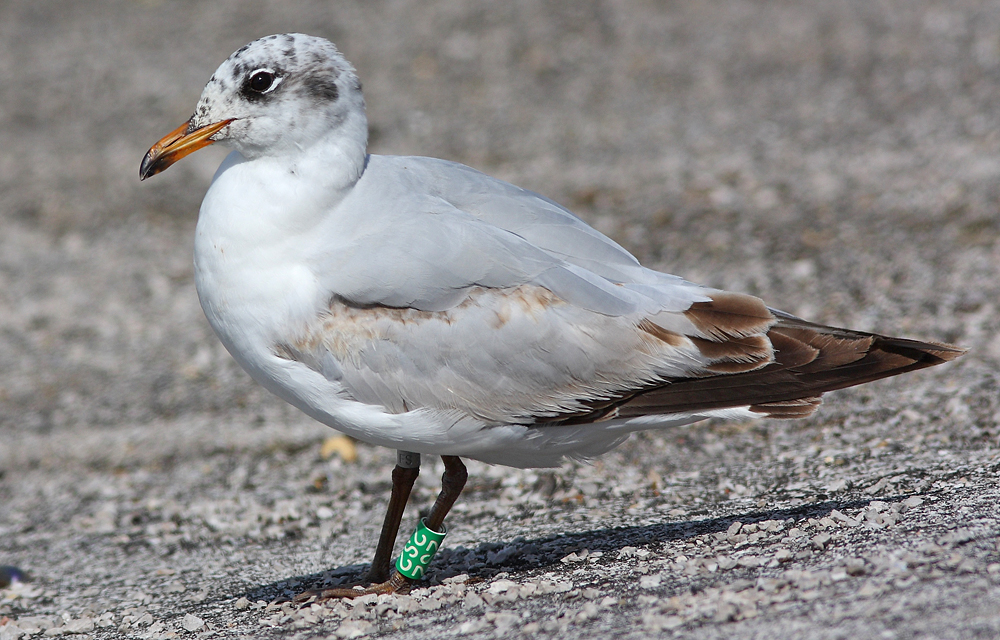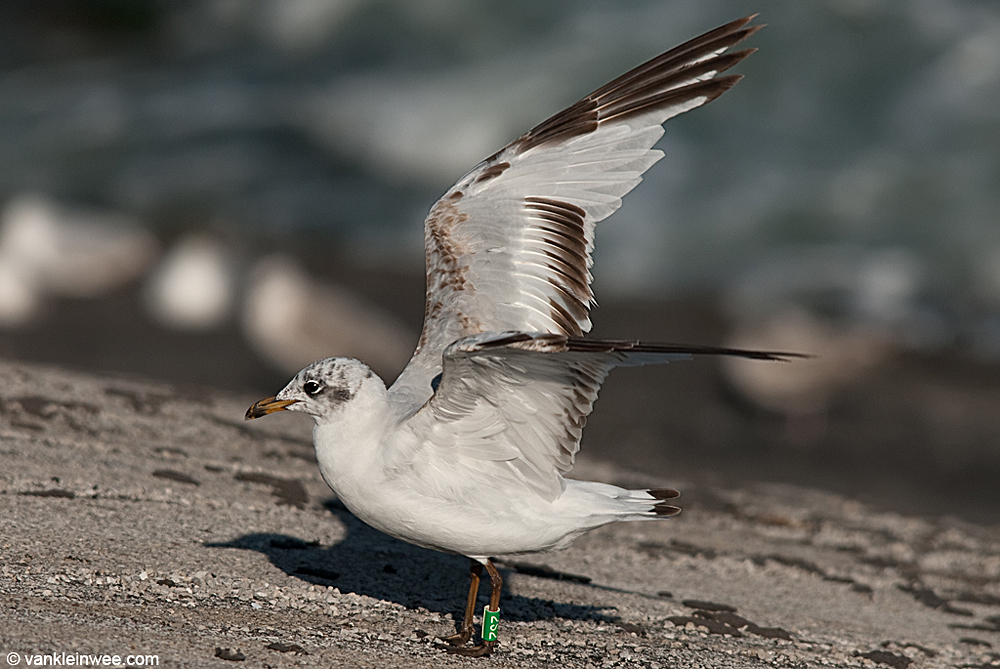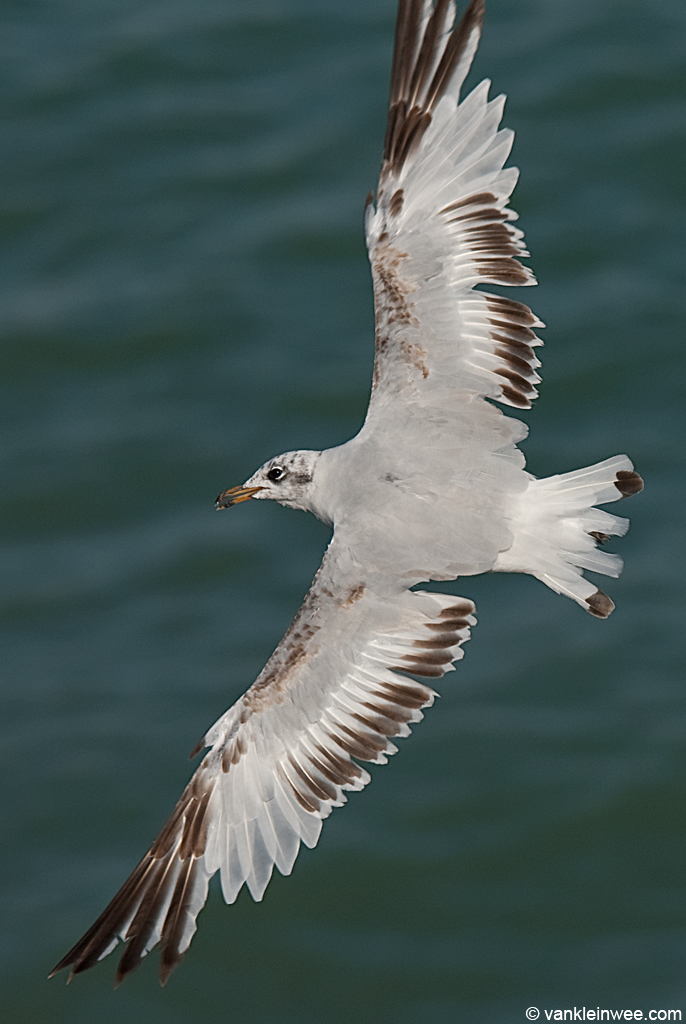 Mediterranean Gull (L. melanocephalus)
Mediterranean Gull (L. melanocephalus)
(last update:
Mediterranean Gull 2S2 July 2010 & 2012, Le Portel / Boulogne-sur-Mer, NW France. Picture: Jean-Michel Sauvage.
Bird has been ringed as pullus at Conchil le Temple, Pas de Calais, FRANCE (50,22N 1,4E) on 09 June 2009. It has been recorded numerous times at Le Portel. Other ring recoveries:
29/02/2012 Donville-les-Bains, la Plage, Manche, FRANCE 48,51N 1,35W Desgué, P
06/03/2012 Donville-les-Bains, la Plage, Manche, FRANCE 48,51N 1,35W Desgué, P
03/07/2012 Le Portel, Pas-de-Calais, FRANCE 50,42N 1,34E Sauvage, J M
below: 4cy 2S2 July 03 2012, Le Portel / Boulogne-sur-Mer, NW France. Picture: Jean-Michel Sauvage.
From June to September, a complete moult takes place, into so-called "adult winter" plumage. The head pattern resembles the pattern in first winter birds, with blackish mask behind the eye. The mantle, scapulars, tertials and all the wing-coverts are replaced for plain pearl-grey feathers. The secondaries are completely white. The adult primaries are shiny pearly-grey, flashing white at a distance. There is a black line along the outer-web of P10 (and sometimes on P9 as well). Secondaries, under-wing and tail all completely white. The bare part coloration in adult plumage: Iris brown, orbital ring red or orangey-red, the bill red or orangey-red with a black bill-band and a yellowish tip and the legs dull reddish or dark. There is some variation in 3cy and 4cy wing-tip patterns.

below: 2cy 2S2 July 01 & 22 2010, Le Portel / Boulogne-sur-Mer, NW France. Picture: Jean-Michel Sauvage & Maarten van Kleinwee.
From May to September, the first complete moult takes place, into so-called "second winter" plumage. The head pattern resembles the pattern in first winter birds, with a blackish mask behind the eye. The mantle, scapulars, tertials and all wing-coverts are replaced with plain pearl-grey feathers. The secondaries are as in adult birds, pale grey with a white tip. The second generation primaries are much paler than the first juvenile primaries, but still not nearly all-white as in adults. After finishing this complete moult a 2cy Mediterranean Gull in autumn has a diagnostic wing-tip pattern with a variable amount of black on P5-P10. P5 has only a small black sub-terminal spot, becoming gradually larger on the outer primaries as the black patch "eats up" the white along the edge of the outer-web, most prominent on P9-P10. In some birds, the outer greater primary coverts and rarely the alula coverts may show dark markings as well. The bill is orangey-red with a dark sub-terminal band. The legs are dull red or more obvious orangey-red. As with 2cy birds there is individual variation in this age group but it is less pronounced and mostly involves the amount of black in the outer primaries and the colour of the bill.


